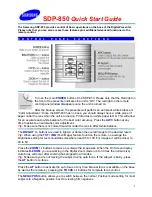
www.qimaging.com
©2016 QImaging. All rights reserved. QI_Retiga R Series Camera_UM_Rev_A5
11
RETIGA R
™
SERIES USER MANUAL
ROI / Binning
The QI Retiga R Series camera supports both user-defined, arbitrary regions of interest (ROI) as well as
hardware pixel binning modes of 1x1, 2x2, 4x4, 6x6, 8x8, 12x12, and 16x16. Both ROIs and pixel binning will
enable faster frame rates, making focusing and scanning much easier. Pixel binning also has the advantage
of significantly increasing the signal-to-noise ratio (SNR) of the image, as the effective pixel size is increased,
collecting more light, and the impact of read-noise is diminished relative to adding signals together off chip.
Device Synchronization
Your QI Retiga R Series camera offers several methods of hardware synchronization via TTL signals with external
devices, including function generators, light sources, shutters and filters. Each camera has an I/O connector (pin
out functions are described in the specifications chapter) on the back for trigger-in/out and various TTL input
and output operations.
An optional cable is available to access primary signals such as “Trigger-in,” “Expose out,” “End of Frame” and
“Shutter Out”. The camera triggers on the rising edge of a TTL signal. QI Retiga R Series cameras support three
trigger modes:
Trigger-First Mode
In this mode, the camera requires one trigger to begin the acquisition of a stream of images. Once a single trigger
is received, the camera will use its internal clock to acquire the entire image stream, independent of any future
triggers.It is possible to run this triggering mode in either Non-Overlap Mode (left) or Overlap Mode (right).














































